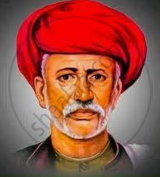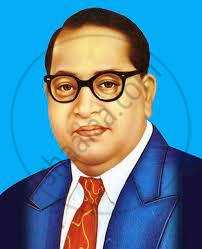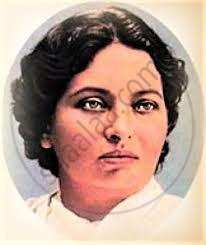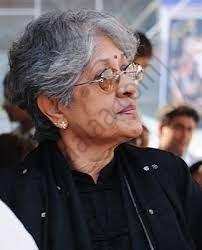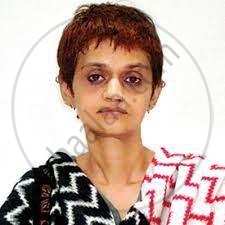Topics
Historiography : Development in the West
History : Applied History
Working of the Constitution
Historiography : Indian Tradition
The Electoral Process
Political Science : Working of the Indian Constitution
Applied History
Political Parties
History of Indian Arts
- What is ‘Art’?
- Indian Traditions of Visual Arts (Drik Kala): Painting
- Prehistoric Paintings
- Mural Paintings and Cave Painting
- Folk Styles of Paintings
- Classical Styles of Painting
- Miniature Paintings in Manuscripts
- Modern Indian Paintings
- Indian Traditions of Visual Arts (Drik Kala): Sculpture Art
- Indus Civilization Sculpture
- Folk Styles of Sculptural Art
- Classical Styles of Sculptural Art
- Indian Iconography
- Indian Traditions of Visual Arts (Drik Kala): Architecture and Sculpture
- Rock-cut Architecture
- Temple Architecture
- Indo-Islamic Architecture
- Indo-Gothic architecture
- Indian Traditions of Performing Arts
- Indian Theatre
- Indian Music
- Indian Dance
- Present Scenario of the Performing Arts
- Art, Applied Art, and Professional Opportunities
Social and Political Movements
- Movement
- Important Movements in India
- Tribal Movement
- Farmers Movement
- Worker's Movements
- Women’s Movement
- Environment Movements
- Consumer Movement
Mass Media and History
Challenges Faced by Indian Democracy
Entertainment and History
Sports and History
Tourism and History
Heritage Management
History - Imperialism
History - 20th Century Age of conflict
History - Emancipation of Asia and Africa
History - World after World War 2
Political Science
Geographical discoveries and colonization
- Concept for Geographical Discoveries and Colonization
Africa
- Imperialism - Africa
Asia: India, China, Japan
- Concept for Asia: India, China, Japan
Dictatorships in Europe, Second World War and world
- Concept on Dictatorships in Europe
- Concept for Second World War and World
First world war
- Concept on First World War
The League of Nations
- Concept for the League of Nations
Russian Revolution
- Concept for Russian Revolution
United Nations Organization
- Concept for United Nations Organization
Africa
- Emancipation of Africa
Asia
- Emancipation of Asia
Globalization
- Globalization After World War II
Scientific and Technological Progress
- Scientific and Technological Progress After World War II
Cold war
- Formation of the Cold War
Social Diversity and Democracy
- Social Diversity
- Coccept for Caste/Race and Democracy
- Concept for Language and Democracy
- Cocnept for Religion and Democracy
- Concept for Gender and Democracy
- Concept for Democracy and Diversity
Challenges to Democracy Remedial Measures to the Challenges
- Concept for Challenges to Democracy Remedial Measures to the Challenges
Internal work
Democracy
- Democracy - Meaning, Types and Characteristics
Political Parties and Types
- Political Parties
- Importance of Political Parties
- Major National and Regional Parties in India/ Types of Political Parties
- Marxist Histroy
- Subaltern History
- Feminist History
Notes
Historiography in the Post-Independence Era:
Along with dynastic history, cultural, social, and economic histories were also written throughout the post-independence era. Historiography now incorporates modern schools of thought including Marxist, Subaltern, and Feminist History. The need to write histories of numerous societies, sciences, economic systems, political ideologies, cultural features, etc., became apparent to researchers during this time. They introduced new schools of thought. These adjustments broadened the subject matter of historical writing.
1. Marxist History:
- The main focus of Marxist historians' publications was their concern for the modes of production, the means of production, and industrial relations. As a result, the central concern of Marxist historiography has been the analysis of the effects of all significant social events. Indian Marxist historians have researched changes to the caste system.
- Scholars like Damodar Dharmanand Kosambi, Comrade Shripad Amrut Dange, Ram Sharan Sharma, and Comrade Sharad Patil have made significant contributions among the eminent Indian historians who followed the Marxist ideological framework.

Damodar Kosambi
- One of the founding members of the Indian Communist Party was Comrade Dange. His book, "Primitive Communism to Slavery," is an example of Marxist history.
2. Subaltern History:
- The seeds of subaltern history are found in Marxist historiography.
- The role of the Italian historian Antonio Gramsci is very important in developing the idea that history should be written starting from the bottommost ranks of people in society. In fact, subaltern means the ‘bottommost ranks.’
- Folklore has been considered a very important source of writing subaltern histories.
- Ranjit Guha, an Indian historian played a major role in establishing subaltern history as an important academic school of historiography.
A] Mahatma Jyotirao Phule:
|
Mahatma Jyotirao Phule |
- Societal reformer Jyotirao Govindrao Phule fought against social ills including untouchability and the caste system and was a fervent supporter of women's suffrage and the education of girls.
- Jyotirao attacked the orthodox Brahmins and other upper castes and termed them "hypocrites".
- It is believed by many that it was Phule who first used the term ‘Dalit’ for the depiction of oppressed masses often placed outside the ‘varna system’.
- Mahatma Phule drew attention to the exploitation of women, Shudras, and Atishudras under the pretext of religion in his book 'Gulamgiri’.
B] Dr. Babasaheb Ambedkar:
|
Dr. Babasaheb Ambedkar |
- Dr. Babasaheb Ambedkar in his two books, ‘Who were the Shudras’ and ‘The Untouchables’ wrote about the injustice done to the Dalits and their significant role in shaping the cultural and political aspects of India.
3. Feminist History:
- For a long period of time, male scholars were involved in the writing of Indian history. Hence the role and achievements of women in history remained neglected.
- Highlighting this fact became the major task of the feminist historian. It was a daunting task to compile and study the historical writings of women. It was also necessary and important to rethink women's position in history.
A] Tarabai Shinde:
|
Tarabai Shinde |
- Tarabai Shinde has a prominent place among the feminist historians who wrote about women in the nineteenth century, i.e., the pre-independence era.
- She wrote a book “Stripurush Tulana” which was published in 1882.
- It is acknowledged as the first feminist book published in India.
- Her writings attacked the male-dominated social system and the caste system.
B] Pandita Ramabai:
|
Pandita Ramabai |
- Pandita Ramabai wrote a book named "The High Caste Hindu Woman".
- It was a book on the life of women published in 1888.
C] Meera Kosambi:
|
Meera Kosambi |
- The feminist literature of the post-independence era concentrated on the issues like employment of women, the treatment meted out to them at their workplace, their right to political equality, etc.
- Among the recently published feminist literature Meera Kosambi’s book ‘Crossing Thresholds: Feminist Essays in Social History.’ contains essays on the life stories of women like Pandita Ramabai and Dr. Rukhamabai
D] Dr. Sharmila Rege:
|
Dr. Sharmila Rege |
- A lot of literature is available unfolding the viewpoint of Dalit women in Maharashtra.
- Dr. Sharmila Rege’s book- Writing Caste, "Writing Gender: Reading Dalit Women's Testimonies" includes her essays on the autobiographies of Dalit women.
There have been a number of Indian historians who wrote without embracing a particular ideology. Among them historians like Sir Jadunath Sarkar, Surendra Nath Sen, Riyasatkar G.S. Sardesai, and Tryambak Shankar Shejawalkar are noteworthy. In recent times historians like Yashwant Dinkar Phadke, Ramchandra Guha, etc. have contributed extensively to the historiography of modern India.
